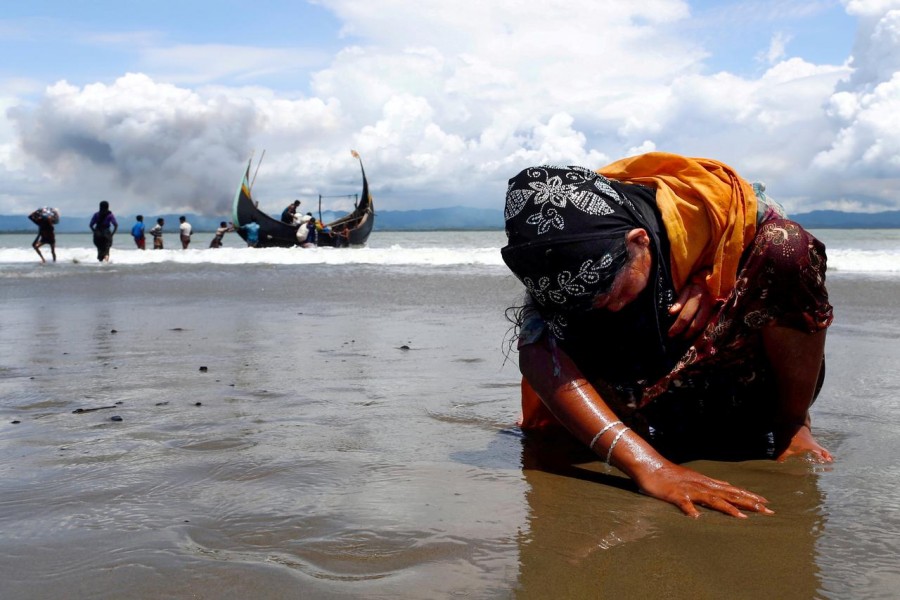Survivors from a boat crammed with over 300 Rohingya Muslim refugees told Malaysian authorities that dozens of their people perished and their bodies were thrown in the sea during a tortuous four-month voyage
The head of the Malaysian Maritime Enforcement Agency (MMEA) described the ordeal suffered by Rohingya whose damaged boat had made land on the Malaysian island of Langkawi on June 8, with 269 people aboard.
He also recounted how the Rohingya had been transferred from a larger “motherboat” to a smaller vessel half-way through a voyage that began close to the Myanmar-Bangladesh border back in February.
“I was told that around 300 plus were transferred” to the boat that reached Malaysia, MMEA Director General Mohd Zubil Bin Mat Som told a news conference on Wednesday.
“But some died at sea. They were thrown overboard,” he said, later telling Reuters that those that perished had fallen sick, without elaborating further.
The Rohingya had risked the perilous sea journey south across the Bay of Bengal and the Andaman Sea, having lost hope of making a better life in the refugee camps in Bangladesh, where many of them had found sanctuary after fleeing their homes in Myanmar following a military crackdown in August 2017.
Mainly Muslim Malaysia is home to the second largest number of Rohingya refugees after Bangladesh, though there is growing opposition to them settling in the Southeast Asian nation as an ailing economy and the coronavirus scare have made people less tolerant of the newcomers.
The survivors of the boat that came ashore in Langkawi have been detained and their future remains unclear.
Mohd Zubil declined to comment on whether a decision had been made to push the detainees back out to sea once their boat is repaired, a reported proposal that has been criticised by human rights groups.
He said the fate of close to 500 Rohingya who had remained on “Motherboat 1” after the transfer at sea was unknown.
“We cannot locate Motherboat 1... We’ve been trying for two weeks but we can’t locate it.”


